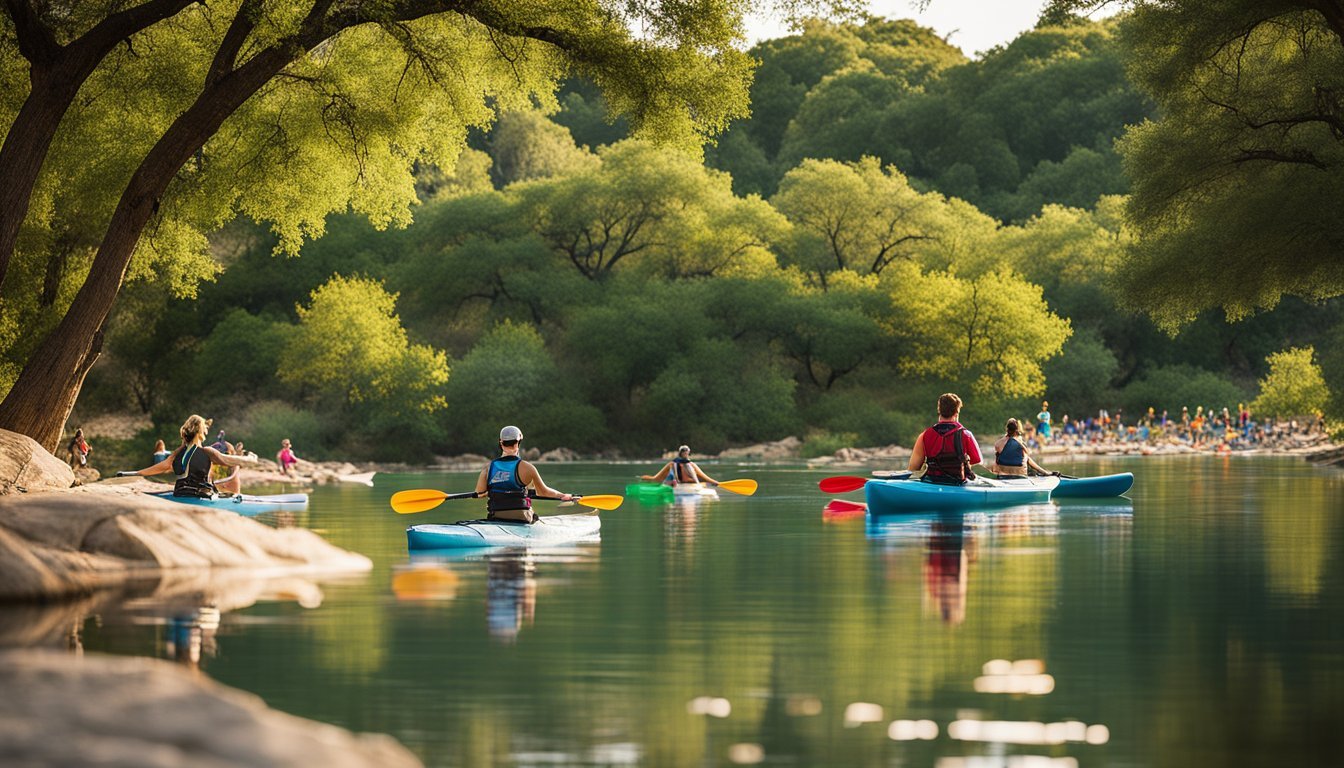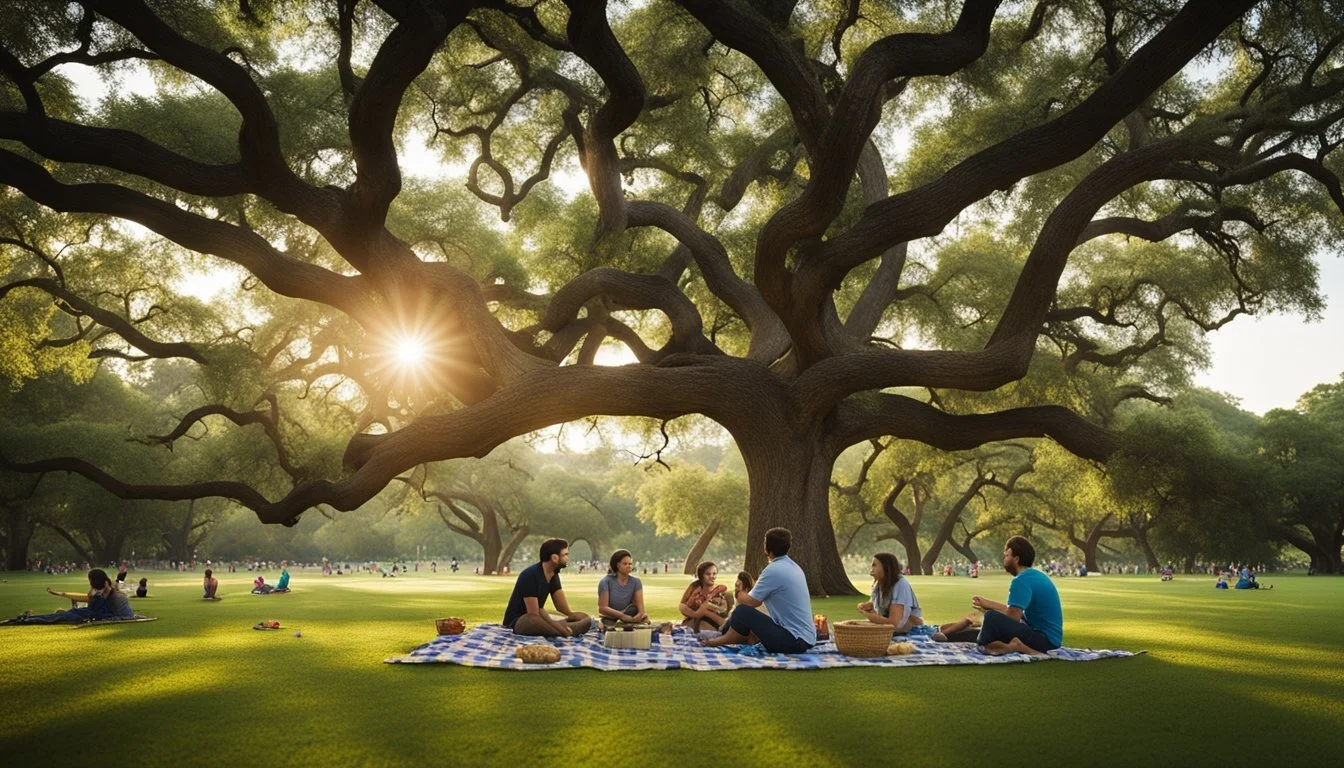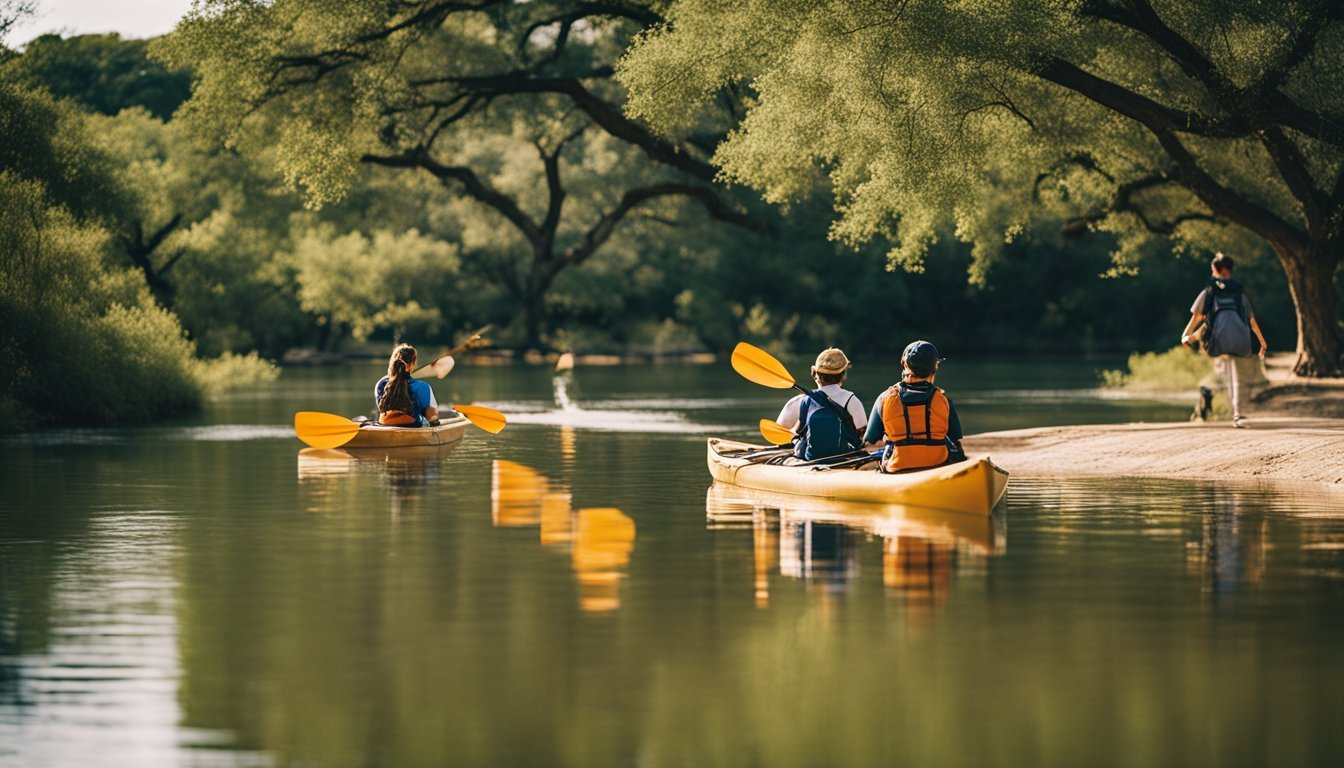7 Best Outdoor Activities in Austin for UT Austin Students
Top Campus Adventures
Austin offers a vibrant array of outdoor activities perfect for University of Texas students looking to make the most of their free time. Situated in the heart of Texas, the city provides an ideal mix of natural beauty and urban excitement that attracts adventure enthusiasts and leisure seekers alike.
Whether you're seeking a serene getaway on the water or an adrenaline rush in the trees, Austin has something to offer. From its scenic parks and lakes to its unique recreational spots, students can find numerous ways to explore the outdoors and create lasting memories.
1) Barton Springs Pool
Barton Springs Pool is a must-visit spot for UT Austin students seeking a refreshing outdoor activity. Located in the heart of Austin, this natural pool is fed by underground springs, maintaining a consistent temperature between 68-70 degrees Fahrenheit year-round.
The pool's crystal-clear water and spacious surroundings make it ideal for swimming, lounging, and socializing with friends. Admission is charged from spring break through the end of summer, ensuring the pool is well-maintained.
Families with kids should note that the chilly water can be challenging for younger children, though the shallow end provides a safer area for little ones. Inflatable toys are allowed in designated areas, ensuring safety and fun for all visitors.
For those driving, ample parking is available on-site and in nearby overflow lots. Alternatively, students can utilize public transportation, such as the 30 bus, which stops just a five-minute walk away.
Barton Springs Pool offers a unique blend of natural beauty and urban convenience, making it a top destination for students looking to unwind and enjoy the great outdoors close to campus.
2) Mount Bonnell Hike
Mount Bonnell offers stunning views and is one of Austin's highest points. Located in Covert Park, it has been a popular spot for both locals and visitors.
The trail to the summit involves climbing a staircase with around 102 steps. At the top, hikers can enjoy panoramic views of Lake Austin and the city skyline.
The park opens daily from 5 a.m. to 10 p.m., making it an excellent spot for sunrise or sunset visits. Picnickers can take advantage of several tables available, offering a picturesque dining experience.
Mount Bonnell is dog-friendly, allowing leashed pets. The natural beauty and accessibility make it a favorite destination for outdoor enthusiasts.
3) Lady Bird Lake Kayaking
Lady Bird Lake, created by the construction of the Longhorn Dam in 1960, is a haven for kayaking enthusiasts. Named after Claudia "Lady Bird" Johnson, the lake covers 416 acres and offers stunning views of Austin's skyline.
For UT Austin students, Lady Bird Lake provides a serene kayaking experience. With calm waters, it's suitable for beginners and seasoned kayakers alike. Rental services like EpicSUP and Rowing Dock make it convenient to get on the water.
EpicSUP, located on Lakeshore Boulevard, offers single and double kayaks. Rowing Dock, situated west of MoPac (Loop 1), provides an array of rental options, including fishing kayaks. Both rental companies cater to various preferences and experience levels.
Kayaking on Lady Bird Lake is also a budget-friendly option. Rentals range from $10 to $20 per hour, with daily rates available. The lake's central location makes it easily accessible for students, adding to its appeal as a weekend activity.
Paddling through Lady Bird Lake allows kayakers to explore two miles of lush aquatic plants and wildlife. The backdrop of downtown Austin adds to the scenery, providing a unique urban outdoor experience.
4) Zilker Park Picnics
Zilker Park offers a beautiful setting for picnics, ideal for UT Austin students seeking a relaxing outdoor escape. With expansive green spaces and shaded areas, it provides plenty of spots to lay down a blanket and enjoy a meal with friends.
Nature lovers will appreciate the park's scenic views and the opportunity to be surrounded by greenery. There's ample space to play frisbee, read a book, or simply bask in the sunshine.
Additionally, Zilker Park is conveniently located near other attractions, making it easy to combine a picnic with a visit to Barton Springs Pool or a stroll around the botanical gardens. Remember to pack essentials like sunscreen, water, and plenty of snacks to make the most of your outing.
5) Congress Avenue Bats
One of the most unique outdoor activities in Austin is watching the Congress Avenue Bats. Each evening, around dusk, thousands of Mexican free-tailed bats emerge from under the Congress Avenue Bridge. This natural spectacle attracts both tourists and locals, creating a captivating show in the heart of the city.
The best time to view the bats is between March and October. The population peaks around late summer, reaching up to 1.5 million. This timing aligns perfectly with the academic calendar for UT Austin students, making it a great evening outing.
There are various vantage points for viewing the bats. The south bank of Lady Bird Lake, the boardwalk trail, and the bridge itself are popular spots. Additionally, boat tours offer a unique perspective from the water. Arriving early ensures a good viewing location.
For those interested in photography, the scene can be quite mesmerizing. The silhouetted bats against the evening sky provide excellent opportunities for striking images. Remember to bring a camera with a good zoom lens for the best shots.
With its central location and natural beauty, watching the Congress Avenue Bats offers a memorable outdoor experience. It's an activity that combines nature with urban life, making it perfect for UT Austin students looking to explore their city.
6) Blanton Museum of Art
The Blanton Museum of Art, located at the University of Texas at Austin, offers a unique blend of outdoor and cultural experiences.
Situated at 200 E. Martin Luther King Jr. Blvd., the museum provides easy access for UT Austin students via bus or rideshare, with a convenient drop-off point on Brazos Street.
The museum features a wide range of artworks and rotating exhibitions. Admission varies between $8-$15, but students can take advantage of free admission every Tuesday.
While the Blanton’s primary draw is its impressive collection of art, the recently redesigned exterior adds to the experience. Students can enjoy the outdoor plaza and installations even when the museum itself is closed.
Blanton Museum is open to visitors from Tuesday to Sunday, with hours from 10 am to 5 pm. This flexibility allows students to fit a visit into their busy schedules.
Accessible pathways and resources ensure that the museum is inclusive and enjoyable for everyone, making it a great outing for all students, regardless of ability.
Exploring both the interior galleries and the outdoor spaces provides a well-rounded and enriching experience.
7) Texas Memorial Museum
The Texas Memorial Museum, now known as the Texas Science and Natural History Museum, offers a unique experience for students at UT Austin.
Located on the university campus, this museum showcases extensive collections in natural history, including numerous dinosaur exhibits. It's an ideal spot for students interested in paleontology and earth sciences.
The museum provides a chance to explore detailed displays and interactive exhibits. Students can view dinosaur fossils and learn about the prehistoric creatures that once roamed Texas.
The renovated facility, which reopened in September 2023, aims to engage visitors of all ages with its new features. This makes it a great venue for educational outings or casual visits.
The museum frequently hosts special events and exhibits, making each visit a new experience. Engaging presentations and temporary exhibits often highlight different aspects of natural history.
It's a conveniently located cultural hub where students can both relax and expand their knowledge outside the classroom.
Benefits of Outdoor Activities for UT Austin Students
Engaging in outdoor activities presents numerous advantages for students at the University of Texas at Austin. This not only helps improve physical and mental health but also strengthens social connections among students.
Physical Health Advantages
Regular participation in outdoor activities can significantly boost physical health. Activities such as hiking, swimming, and rock climbing promote cardiovascular fitness. Additionally, these activities help to build muscle strength and endurance.
Hiking and walking around Austin’s green spaces, like Barton Creek Greenbelt, can also aid in weight management. Engaging in these activities regularly can lead to improved flexibility and reduce the risk of chronic illnesses such as obesity and heart disease.
Moreover, being outdoors encourages a more active lifestyle, which is essential for long-term physical well-being.
Mental Health Benefits
Outdoor activities are a boon for mental health. Being in nature helps to lower stress levels and can alleviate symptoms of anxiety and depression. The tranquility of natural settings provides a respite from academic pressures.
Participation in activities like sailing or nature walks can enhance mood by increasing the levels of serotonin and endorphins. Fresh air and sunlight also contribute to better sleep patterns. Many UT Austin students find that time spent in outdoor settings boosts their concentration and academic performance.
Regular engagement in these activities promotes mindfulness and a sense of well-being.
Enhancing Social Connections
Outdoor activities serve as excellent opportunities for fostering social connections. Group activities, such as intramural sports or club events, enable students to meet and bond with peers outside the classroom. This is invaluable for building a supportive community.
Collaborative outdoor experiences, like team sports or adventure trips, build teamwork and communication skills. Participation in outdoor clubs, such as the sailing or marine biology clubs, helps students find common interests and establish lasting friendships.
These interactions often lead to a more inclusive and engaging college experience, enhancing overall campus life.
Preparing for Outdoor Activities
Before heading out, it's crucial to have the right gear and to follow safety measures to ensure a pleasant experience. This section will cover what items to pack and important precautions to take.
Essential Gear and Equipment
Having the proper gear enhances the outdoor experience and ensures preparedness for various situations. Footwear is key; sturdy, comfortable hiking boots or shoes are recommended for trails and uneven terrain. Water bottles or hydration packs are essential to stay hydrated, especially during hot Texas days. A hat, sunglasses, and sunscreen provide protection from the sun’s strong rays.
For activities like kayaking or paddleboarding, a life jacket is non-negotiable. Backpacks should include first-aid kits, multi-tools, snacks, and maps or GPS devices. For prolonged outings, lightweight, weather-appropriate clothing layers are advised to adapt to changing conditions. Always check specific requirements for each activity.
Safety Tips and Best Practices
Safety in outdoor activities begins with preparation and awareness. Inform someone of your plans, especially if venturing into remote areas. Weather conditions can change rapidly; always check the forecast and be prepared for sudden changes. Carry a fully charged phone and, if possible, a portable charger.
Trail etiquette includes staying on marked paths to protect natural habitats. When swimming or partaking in water activities, be mindful of currents and water levels, especially after rains. Wildlife encounters are often unexpected; keep a respectful distance and avoid feeding animals. First aid training is beneficial, equipping participants with knowledge for handling minor injuries until professional help arrives. Lastly, always pack out what you pack in to maintain the environment's natural beauty.
Outdoor Etiquette and Environmental Responsibility
Respecting natural spaces and wildlife is crucial when participating in outdoor activities. Following environmentally-responsible practices ensures the beauty and health of these areas for everyone.
Respecting Nature and Wildlife
Students should observe wildlife from a distance to prevent stress and disruption to animals. Feeding animals disrupts their natural habits and can make them dependent on humans.
Stick to marked trails to avoid trampling vegetation and causing soil erosion. If you encounter plants or animals, leave them undisturbed to preserve the ecosystem.
Obey posted signs and regulations, which are designed to protect both visitors and the environment. Quiet behavior in natural spaces minimizes disturbances to wildlife.
Leave No Trace Principles
Adhering to the Leave No Trace principles is essential. Pack out all trash, including food scraps, to prevent attracting wildlife and polluting the area.
Minimize campfire impact by using a camp stove or fire rings where available. Always ensure fires are completely out before leaving.
Travel and camp on durable surfaces like established trails and campsites. Avoiding sensitive areas like wet meadows helps prevent lasting damage.
Dispose of waste properly. Use restrooms when available, and follow guidelines for burying human waste if no facilities are present. Always plan ahead to be prepared for waste disposal in natural environments.






